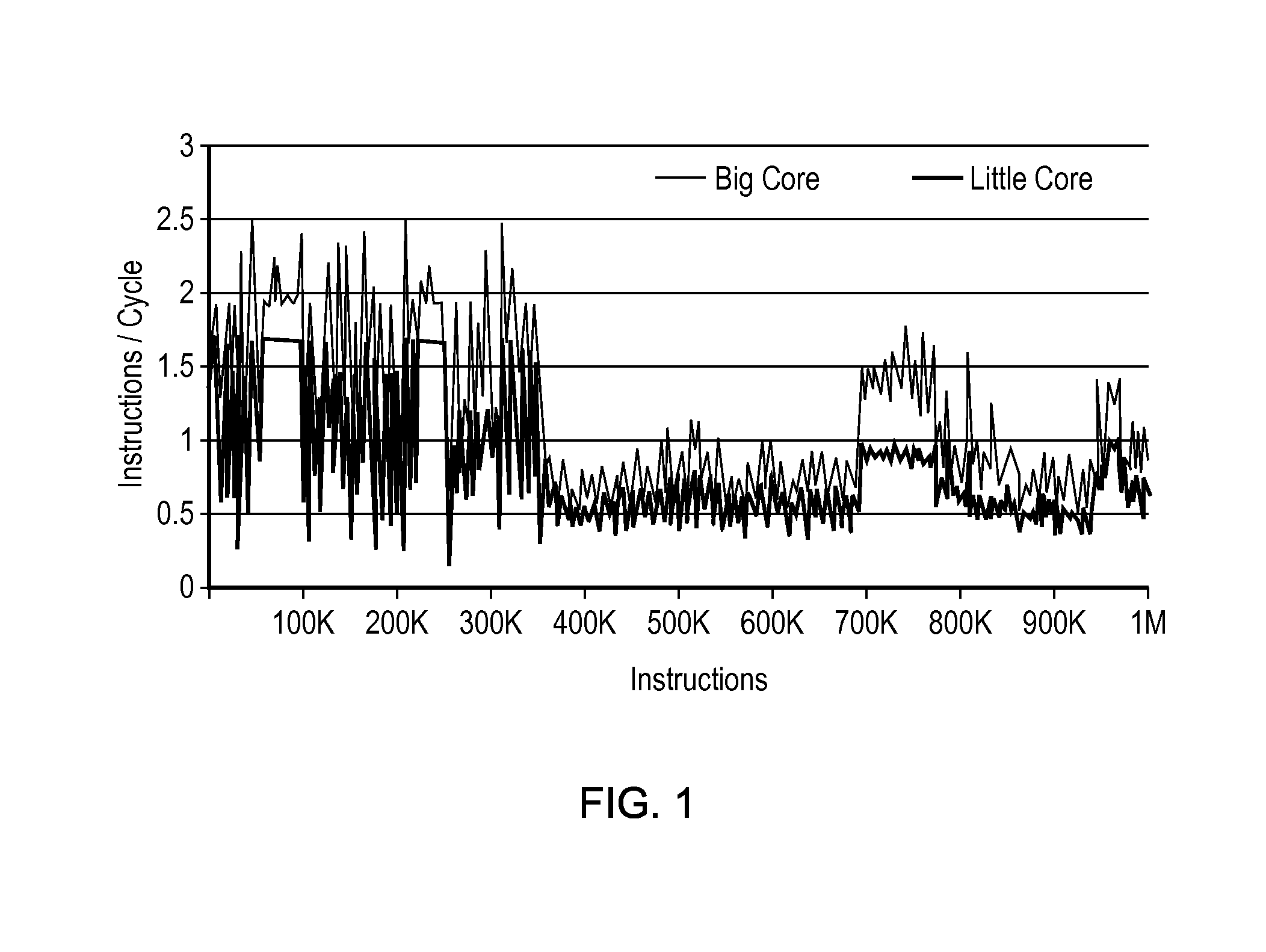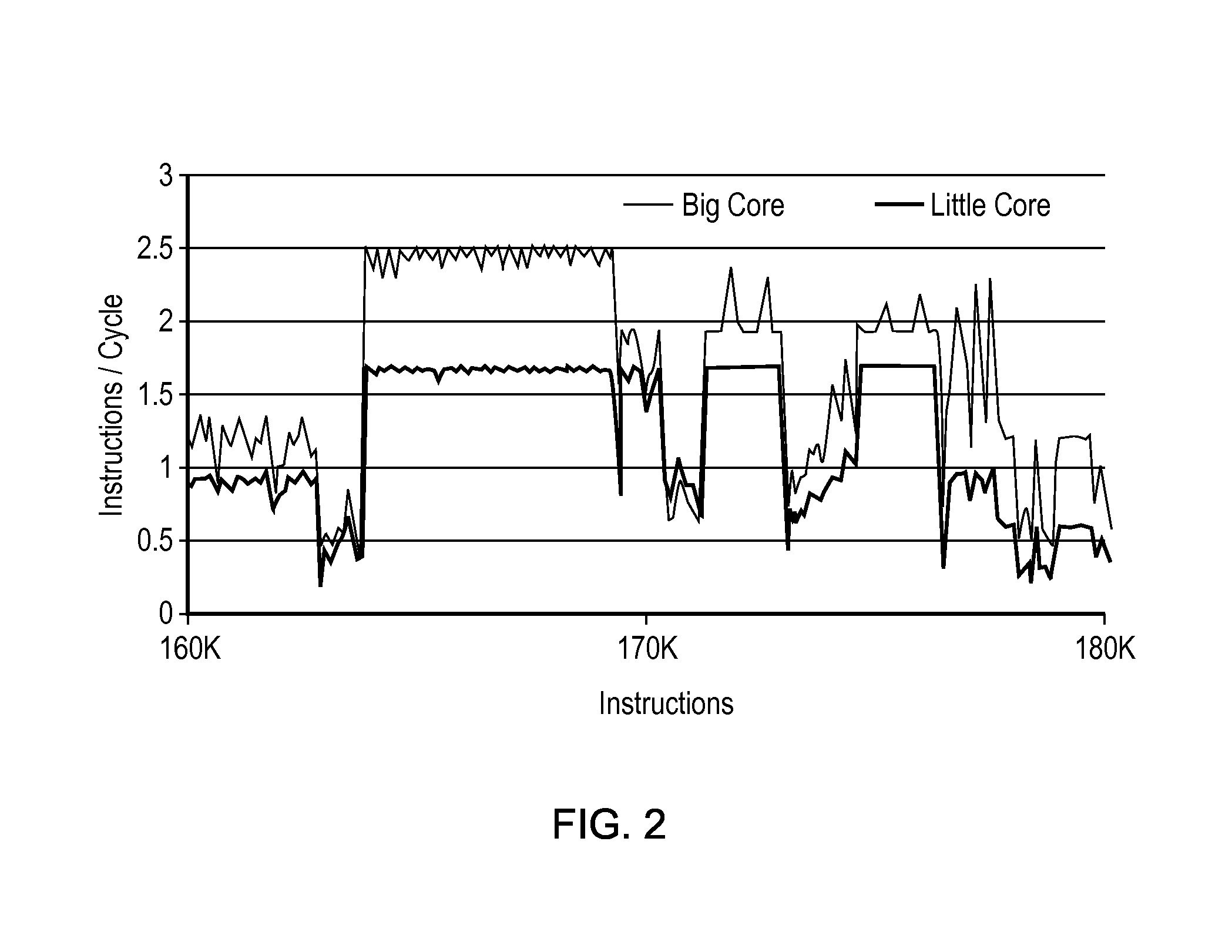Heterogeneity within a processor core
a processor core and heterogeneity technology, applied in the field of data processing, can solve the problems of large overhead, slow and energy-consuming, and limit the migration between cores to a granularity
- Summary
- Abstract
- Description
- Claims
- Application Information
AI Technical Summary
Benefits of technology
Problems solved by technology
Method used
Image
Examples
Embodiment Construction
[0073]Prior art heterogeneous multicore systems which switch between asymmetrically configured cores having different performance / energy ratios rely on coarse-grained switching to exploit application phases that occur at a granularity of hundreds of millions to billions of instructions. These systems assume the performance within a phase is stable, and simple sampling-based monitoring systems can recognize low-performance phases and map them to a more energy efficient core. While these long term low-performance phases do exist, in many applications they occur infrequently, limiting the potential to utilize a more efficient core. Observing performance at much finer granularity reveals more low-performance periods, increasing opportunities to utilize a more energy efficient core. FIG. 1 shows a trace of the instructions-per-cycle (IPC) for the 403.gcc benchmark over a typical operating system scheduling interval of one million instructions for both a three wide out-of-order (“big”) co...
PUM
 Login to View More
Login to View More Abstract
Description
Claims
Application Information
 Login to View More
Login to View More - R&D
- Intellectual Property
- Life Sciences
- Materials
- Tech Scout
- Unparalleled Data Quality
- Higher Quality Content
- 60% Fewer Hallucinations
Browse by: Latest US Patents, China's latest patents, Technical Efficacy Thesaurus, Application Domain, Technology Topic, Popular Technical Reports.
© 2025 PatSnap. All rights reserved.Legal|Privacy policy|Modern Slavery Act Transparency Statement|Sitemap|About US| Contact US: help@patsnap.com



